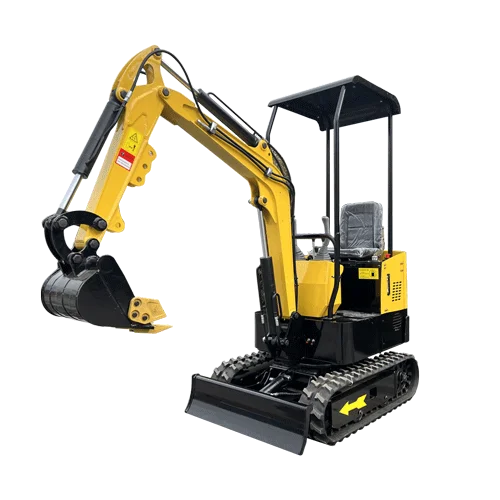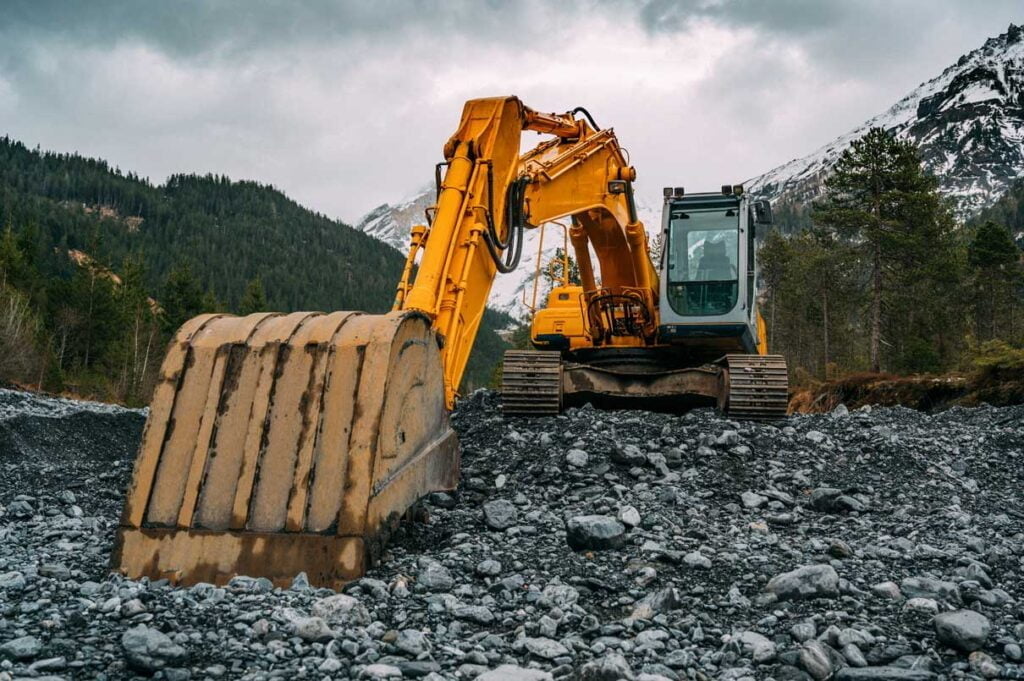Introduction
Excavators are essential pieces of machinery in the construction and mining industries. They come in various types, each designed for specific tasks and applications. Understanding the different excavator types and their capabilities can help you choose the best one for your project needs. In this comprehensive guide, we will explore the various excavator types, their uses, advantages, and limitations. By the end of this article, you will have a clear understanding of which excavator type suits your needs.
The Importance of Choosing the Right Excavator Type

Enhancing Efficiency and Productivity
Selecting the appropriate excavator type can significantly enhance the efficiency and productivity of your operations. Different excavator types are designed to handle specific tasks, and using the right one can lead to faster project completion and reduced operational costs.
Ensuring Safety and Reliability
Using the correct excavator type for the job ensures safety and reliability on the worksite. Each type has unique features and capabilities that make it suitable for particular environments and tasks, minimizing the risk of accidents and equipment failure.
Optimizing Operational Costs
Choosing the right excavator type can help optimize operational costs by reducing fuel consumption, maintenance expenses, and downtime. This section will delve into the cost-saving benefits of selecting the right excavator for your needs.
Understanding Different Excavator Types

Crawler Excavators
Crawler excavators, also known as track excavators, are some of the most common types of excavators. They are equipped with tracks instead of wheels, which provide excellent stability and traction on rough terrain. This section will discuss the key features, advantages, and typical applications of crawler excavators.
Key Features of Crawler Excavators
- Tracks for stability: The tracks provide stability and allow the excavator to operate on uneven and rough terrain.
- Powerful engines: Crawler excavators are equipped with powerful engines that enable them to handle heavy-duty tasks.
- Versatile attachments: They can be fitted with various attachments such as buckets, hammers, and grapples for different applications.
Advantages of Crawler Excavators
- Stability on rough terrain: The tracks provide excellent stability on uneven surfaces, making them ideal for challenging environments.
- High lifting and digging power: The powerful engines and hydraulic systems enable crawler excavators to handle heavy lifting and digging tasks.
- Versatility: They can be used for a wide range of applications, from digging and trenching to demolition and material handling.
Typical Applications of Crawler Excavators
- Construction: Used for digging foundations, trenching, and site preparation.
- Mining: Employed in mining operations for excavation and material handling.
- Demolition: Used for demolishing structures and handling debris.
Wheeled Excavators
Wheeled excavators are similar to crawler excavators but are equipped with wheels instead of tracks. They are ideal for urban environments and paved surfaces. This section will explore the features, benefits, and typical uses of wheeled excavators.
Key Features of Wheeled Excavators
- Wheels for mobility: The wheels provide excellent mobility on paved surfaces and urban areas.
- Hydraulic outriggers: Equipped with outriggers for stability during operation.
- Swivel capabilities: The ability to swivel 360 degrees allows for versatile operation in confined spaces.
Advantages of Wheeled Excavators
- Mobility: Wheels enable the excavator to move quickly between job sites without damaging paved surfaces.
- Versatility: Can be used for various tasks, including digging, lifting, and loading.
- Cost-effective: Lower operating costs on paved surfaces compared to tracked excavators.
Typical Applications of Wheeled Excavators
- Urban construction: Ideal for road construction, utility work, and other urban projects.
- Landscaping: Used for landscaping and site development in residential areas.
- Material handling: Employed for loading and transporting materials in industrial settings.
Mini Excavators
Mini excavators, also known as compact excavators, are small and versatile machines designed for tight spaces and light-duty tasks. This section will cover the features, benefits, and common applications of mini excavators.
Key Features of Mini Excavators
- Compact size: Small footprint allows them to operate in confined spaces.
- Lightweight: Easy to transport and maneuver on various job sites.
- Versatile attachments: Can be equipped with attachments like buckets, augers, and hydraulic hammers.
Advantages of Mini Excavators
- Maneuverability: Can navigate tight spaces and operate in areas where larger machines cannot.
- Ease of transport: Lightweight design makes them easy to transport between job sites.
- Cost-effective: Lower fuel consumption and operating costs compared to larger excavators.
Typical Applications of Mini Excavators
- Residential construction: Used for digging foundations, landscaping, and utility installation.
- Agriculture: Employed for tasks like digging trenches and moving soil on farms.
- Small-scale demolition: Ideal for demolishing small structures and handling debris in confined areas.
Long Reach Excavators
Long reach excavators are designed for tasks that require extended reach and precision. They are commonly used in projects involving deep excavation or working over obstacles. This section will discuss the features, advantages, and typical uses of long reach excavators.
Key Features of Long Reach Excavators
- Extended boom and arm: Longer boom and arm for extended reach and deep digging.
- Stability: Enhanced stability to support the extended reach.
- Precision controls: Advanced control systems for precise operation.
Advantages of Long Reach Excavators
- Extended reach: Ability to reach areas that are inaccessible to standard excavators.
- Deep excavation: Ideal for tasks that require digging deep trenches or foundations.
- Versatility: Can be used for various applications, including dredging and demolition.
Typical Applications of Long Reach Excavators
- Dredging: Used for dredging rivers, lakes, and other bodies of water.
- Demolition: Employed for demolishing tall structures and working over obstacles.
- Deep excavation: Ideal for digging deep trenches and foundations in construction projects.
Suction Excavators
Suction excavators, also known as vacuum excavators, use powerful suction to remove soil and debris. They are ideal for delicate excavation tasks and underground utility work. This section will explore the features, benefits, and typical applications of suction excavators.
Key Features of Suction Excavators
- Powerful suction: Uses powerful vacuum technology to remove soil and debris.
- Precision: Allows for precise excavation around delicate structures and utilities.
- Safe operation: Minimizes the risk of damaging underground utilities.
Advantages of Suction Excavators
- Precision excavation: Ideal for tasks that require careful removal of soil around utilities and structures.
- Safety: Reduces the risk of damaging underground utilities during excavation.
- Versatility: Can be used for various applications, including trenching and potholing.
Typical Applications of Suction Excavators
- Utility work: Used for locating and exposing underground utilities without damaging them.
- Municipal projects: Employed for tasks like cleaning culverts and removing debris from storm drains.
- Archaeological excavation: Ideal for delicate excavation tasks in archaeological sites.
Table: Comparison of Key Features of Excavator Types

To provide a clearer understanding of the different excavator types, here is a comparison table highlighting the key features and typical applications of each type:
| Excavator Type | Key Features | Typical Applications |
|---|---|---|
| Crawler Excavators | Tracks for stability, powerful engines, versatile attachments | Construction, mining, demolition |
| Wheeled Excavators | Wheels for mobility, hydraulic outriggers, swivel capabilities | Urban construction, landscaping, material handling |
| Mini Excavators | Compact size, lightweight, versatile attachments | Residential construction, agriculture, small-scale demolition |
| Long Reach Excavators | Extended boom and arm, stability, precision controls | Dredging, demolition, deep excavation |
| Suction Excavators | Powerful suction, precision, safe operation | Utility work, municipal projects, archaeological excavation |
This table provides a quick comparison of the essential features and typical applications of various excavator types, helping you assess which type might best suit your project needs.
Conclusion
Choosing the right excavator type is crucial for the success of your construction or mining project. By understanding the different types of excavators, their features, advantages, and typical applications, you can make an informed decision that enhances efficiency, safety, and cost-effectiveness. Whether you need the stability of a crawler excavator, the mobility of a wheeled excavator, the compactness of a mini excavator, the reach of a long reach excavator, or the precision of a suction excavator, selecting the right equipment is key to achieving your project goals.
FAQ
What are the main types of excavators?
The main excavator types include crawler excavators, wheeled excavators, mini excavators, long reach excavators, and suction excavators. Each type has unique features and is suited for specific applications.
How do I choose the right excavator for my project?
To choose the right excavator type for your project, consider the specific tasks you need to perform, the terrain and environment of the job site, the required reach and precision, and your budget constraints. Comparing the key features and typical applications of each type can help you make an informed decision.
What are the benefits of using a mini excavator?
Mini excavators offer several benefits, including maneuverability in tight spaces, ease of transport, lower fuel consumption, and cost-effective operation. They are ideal for residential construction, landscaping, and small-scale demolition projects.
Can wheeled excavators be used on rough terrain?
Wheeled excavators are best suited for urban environments and paved surfaces. While they can operate on relatively smooth off-road terrain, they are not ideal for very rough or uneven terrain.
Crawler excavators are better suited for such conditions.
What maintenance is required for excavators?
Regular maintenance for excavator types includes inspecting and replacing worn parts, checking and changing fluids, lubricating moving parts, and ensuring the tracks or wheels are in good condition. Following the manufacturer’s maintenance schedule is essential for ensuring the longevity and reliability of the equipment.
